Have you ever interviewed a body-painted sports star? We did.
It’s a sleepy, late-summer Thursday afternoon at Sydney’s Parramatta Stadium in 2013, which means there’s not a single blue and gold fan in sight. Today, the only evidence of the noise and passion this late-1980s-era colosseum generates is the life-sized bronze statue of Eels legend Ray Price next to the turnstyles. We’re here to interview Parramatta star Jarryd Hayne … who’s here to be body-painted as a character from the just-released computer game Crysis 3. Stuff like this doesn’t happen all that often around these parts. Fitting, then, that one of the game’s most creative and original identities is the one going under the brush. Hayne’s an ideal subject for a PR stunt like this – scarily so. Right down to the title of the game he’s promoting, which accurately describes the Eels’ fortunes of late. But if anyone can save them, it’s Hayne and his armoury of lethal weapons and tricks.
A PR crew has set up camp in one half of the stadium’s “visitors” sheds, which are split in two by a tight hallway, restricting the studio space to roughly half a classroom. Two rectangular – and very bright – flashlights, each the size of a carton of beer, are pointed at Hayne from diagonals. There’s a makeshift artists studio set up in one of the back corners, with backpacks and camera gear bags occupying the wooden-slatted seat space usually reserved for the post-match corporate gear of Parramatta’s visiting rivals. A massage table along one wall, and giant, mushroom-shaped flash photography stands and portable black backgrounds complete the scene.
We’re welcomed to the set by two friendly media staffers, relieved we’ve arrived on schedule. They introduce us to Hayne, who’s standing up one end of the tiny workspace. “I’m being painted as 'Prophet' ‒ I think he’s in Manhattan.” He asks an expert in the background, “Is he in Manhattan? He’s got to protect the city from aliens, I think … Is that right?” Hayne’s composure is remarkable, considering he’s being filmed, photographed, interviewed … and painted by two women all at once. “I like to do things that are interesting ‒ I’m all for doing something different, you know what I mean?” he asks us conversationally. We nod back in full appreciation that we haven't just been paddled away via a media training-tainted monotone answer, which many of his pro-footy peers are famous for. “This is very unique, getting your body painted as a character. I think that’s what sort’ve excited me, you know? It was definitely a buzz when I was told I was going to do it.”
Hayne’s torso is stencilled by a pattern of thin, white lines between which the artists will work their magic on the young star. They’ve begun work on his left bicep, using a honeycomb-shaped template for that alien, other-world effect. One painter is waving a brush which spreads two colours with each stroke, allowing them to accentuate Prophet’s muscles, which bulge through his skin – helps with scaring baddies, presumably. “I’m a gamer, massively,” he offers. “I play mainly Madden and what not, but I play war games like this one as well. They definitely keep the mind ticking over. It’s a good source of getting away from everything. When you’re playing a computer game, you sort of don’t worry about everything that’s going on. You just zone into it. It’s like you’re in another world – you can spend hours just playing games … zoning out.”
Hayne was purposefully picked for this gig from the NRL’s ripest talent because the PR experts judged his thrill-seeking style of play to be similar to Prophet's approach to saving the world. In 2010, he cut through the entire Penrith Panthers squad for an 88m run towards and over the try line in what was 14 seconds of horror for the home side. That piece of brilliance won him the Peter Frilingos Award for “headline moment of the year”, and is generally regarded as the signature example of his freakish powers. “Being successful at the big plays makes it a lot easier to keep doing it,” Hayne reasons. “It’s how I’ve enjoyed my footy. If you’re enjoying what you’re doing, you’re always going to do it at 100 miles an hour.
“Obviously there’s the no-look pass: I’ll try and make the opposition think I’m doing something, then I’ll do something else. It’s always a thrill when it comes off. There have been plenty of times when it hasn’t! When it doesn’t, the first thing I think is how do I make it come off? Or how do I do it better next time?”
This body-painting circus has attracted the attention of media far and wide. After us (Inside Sport is first, of course), enters a reporter and photographer from a local paper, then radio station staff carrying expensive-looking sound gear, then national television crews – there’s even an interview conducted by mobile phone. We stand back, taking all the interest in, watching the room fill like Ned Flanders’ bomb shelter, and remain amazed that such a dynamic on-field identity can appear so relaxed – even separated at times – from all that’s going on around him. There’s even time for a quick glance at his phone in between news interviews and video takes, as well as an occasional visual check on how the artists’ work is progressing. “It’s all starting to come together,” he enthuses. “It’s like a tattoo, hey?”
Jarryd Hayne’s rugby league journey began in working-class Western Suburbs Magpies territory. Like a lot of six-and-seven-year-old “westies”, weekends for him meant friends and footy. “All the way back then, it was about hanging out with the boys,” he tells us, the paint now starting to spread across his chest. A videographer asks him where he thinks a full-size model of Prophet might have him covered in the physical department – Hayne reckons everywhere.
“Footy was a meat pie and a can of Coke after the game, you know what I mean? I started with Campbelltown City, then they folded. Then I went to East Campbelltown, then I moved to the Parra comp in 2000 to Cabramatta ‒ probably one of the strongest clubs in the country.
“As you get older, you start to enjoy your footy more. When you’re young, you’re just sort of shittin’ yourself, getting real worried about not making a mistake, and doing right by the team. You don’t know what’s going on. You’re just trying to get as much game time as you can. But once you get older, you know the ins and outs of the game, the speed. You gain experience ‒ you sort of relax a bit more.”
Hayne made his top grade debut not long after his 18th birthday, against those Panthers in 2006, and went on to score 17 tries in 16 games across the season, including four against the Knights in the Eels’ 46-12 romp – this was just his seventh top-flight appearance. His early exploits even earned him rugby league’s Rookie of the Year award in ’06.
Every now and then, after crossing the try line, he’ll outstretch his arms and form his signature “Hayne Plane” – index fingers (or wing tips?) also pointed, eventually upwards, to produce two “No.1” reminders. The “Plane” is designed to send the Parra faithful into raptures after they’ve witnessed more of his magic, but it’s symbolic of his quick flight from his junior runway to his NRL arrival.
Listening to Hayne reminisce about his earliest playing days answers a lot of questions about his on-field abilities, like how does he pull off these big plays so easily? Where did he learn them? How does he know when to execute that cheeky kick or torpedo pass? And what happens if he stuffs up? He starts to swing this journo’s mindset to what’s teachable to these modern marvels of the footy, and what results after years of toil and commitment. “The way I grew up definitely had an influence on the way I play today,” he tells us. “I grew up playing football seven days a week. There was always a touch footy game on, or a football game on … When you play it so much, you come up with new things, new ways of playing, always trying to muck around with your friends and stuff. It was always, ‘Who has the best trick?’ or, ‘Who has the best play?’ Everyone was always trying to impress, and I think that’s something that’s definitely a reflection of my game today; how I play now.”
It only takes one missed tackle and he’s off. Whenever he’s given space, he accelerates into the clear, swerving and stepping sharply off both feet. Many of his 75 tries for the Eels (up until the start of 2013) had been scored while his side had been pinned down at the opposition’s try line. He’s an intercepting, kick-over-the-top merchant, too, and can smash a bloke one-on-one when need be, using his upper-body bulk to stop even the burliest of prop forwards dead in their tracks.
“[During freaky plays] you’re definitely thinking stuff. Some of it’s off the cuff, but I think a lot of it comes down to confidence. Being confident in what you do. I don’t get too worried about making mistakes. I just try and do the best I can. If it comes off, it comes off, if it doesn’t, it doesn’t.”
A season after signing a reported-$2m contract extension with the Eels in 2008, Hayne was moved from his highly favoured fullback position to five-eighth, producing relatively patchy form. His return to fullback only a handful of games into the ’09 campaign reignited his playing career, resulting in his best season to date, which in turn won him the league's Player of The Year award.
The 2013 season will be Hayne’s eighth in first grade, having clocked up over 140 appearances for his beloved blue and golds. If anything, rather than tone down his high-risk approach to the game, his six Test appearances for Australia, four World Cup games for Fiji and 16 State of Origin matches for New South Wales have only inspired more self-confidence, further fuelling his fire within to shock not only the paying public, but the opposition.
“I’m always trying to play a different style to everyone else and trying to create things and do things that no one else can do,” he expands, now up to his neck in silver paint. “That’s the excitement of it – always trying to do something that’s different. A bit like this, getting painted: it’s the first time.”
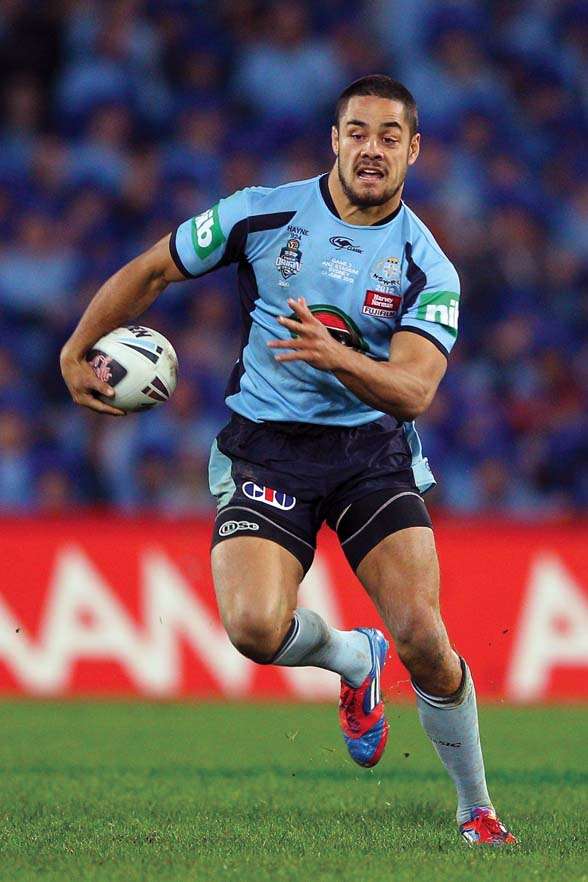 Jarryd Hayne was a scary sight in State of Origin for the New South Wales Blues. (PHOTO BY GETTY IMAGES)
Jarryd Hayne was a scary sight in State of Origin for the New South Wales Blues. (PHOTO BY GETTY IMAGES)The life of a crisis manager ‒ particularly at a club like the Eels, whose fans are more disappointed by Parra losses than an offspring’s woeful school report card ‒ is a daunting one. “We just have to be good as a team,” Hayne searches. “That’s what we’ve lacked in the last couple of years. We’ve all had our ups and downs, but this year it’s a really young squad. It’s a squad that if we’re going to win games, it’s going to come through hard work and determination, because we definitely don’t have the size or the strength to outmuscle teams, but we do have the passion and the drive to get over the top of sides. I think we’re still pretty inexperienced: Chris Sandow and Luke Kelly are going to be in the halves. Kell’s only played a couple of games and Chris is still coming into his best years yet. It’s an exciting time.”
Hayne was recently handed the keys to the team in the form of a leadership role alongside former badboy Reni Maitua and respected bookend Tim Mannah. “The last time I captained was when I was ten or 11 ‒ I’ve always had good captains,” he enthuses. Reuniting with former Blues Origin mentor Ricky Stuart, the Eels’ new coach for 2013 and beyond, is also expected to draw even further improvement from Hayne – if in fact he needs it. He’s 25 now and looks at the game very differently to that teenage debutant. “I think it’s just maturity,” he says. “You get older and you start taking a lot more responsibility on and leadership and that sort of stuff. It’s part of the game; everyone goes through the stages, the ups and downs. I’m really enjoying the next step of my career, which is obviously leadership and leading the boys around.”
In the thick of his career, and with his levels of commitment and focus increasing with each trip down the Parramatta Stadium players’ race, Hayne still draws on the experience of his biggest fan, his father Manoa Thompson, a star for South Sydney, Western Suburbs and Auckland between the late ’80s and early ’90s. “I think he probably had a bit of a disappointing career. He definitely under-achieved and I think that’s been his biggest thing,” he says of his old man, who clocked up just 95 appearances over seven seasons. “He’s always wanted me to not make the mistakes he made and realise it’s such a short time. I think with his career, he definitely had a lot of potential, but he just didn’t take it upon himself to fully get out of it what he could’ve. He really pumped into me that it’s a short career and you try and get as much out of it as you can.
“He was a centre, so we play different positions … Kind’ve similar playing styles, though. He had a big boot on him – that’s probably where I get my boot from; my kicking game is definitely a reflection of his.”
His Dad played in what’s traditionally referred to as rugby league’s toughest, no-nonsense era. So what would he think of his son getting covered in body paint to play a super-hero like Prophet?
“Well, he used to be an underwear model, ha ha! I don’t think he knows I’m doing it.”
Related Articles
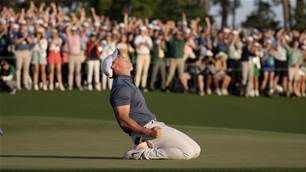
Feature Story: Moving the Needle
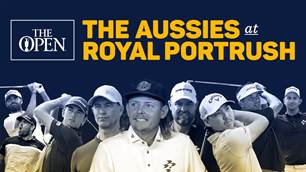
The Aussies at The Open
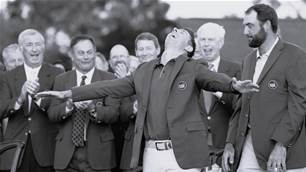
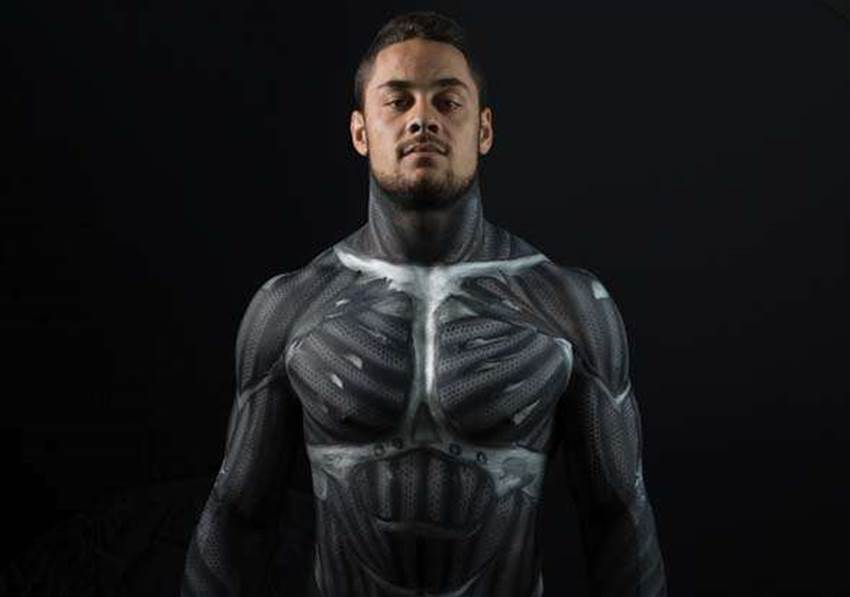
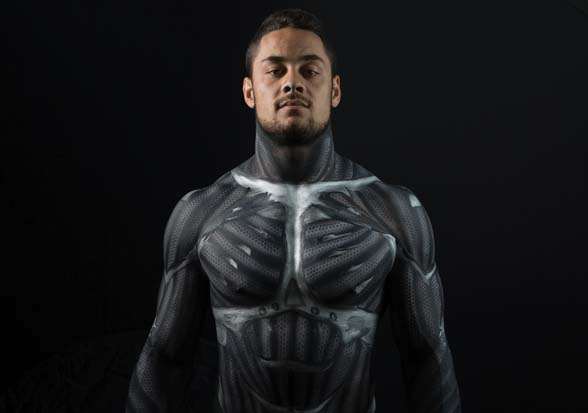
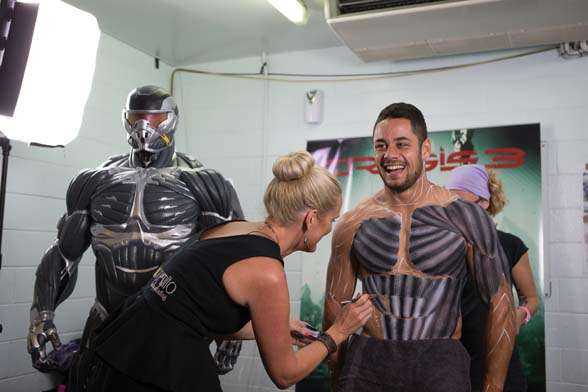
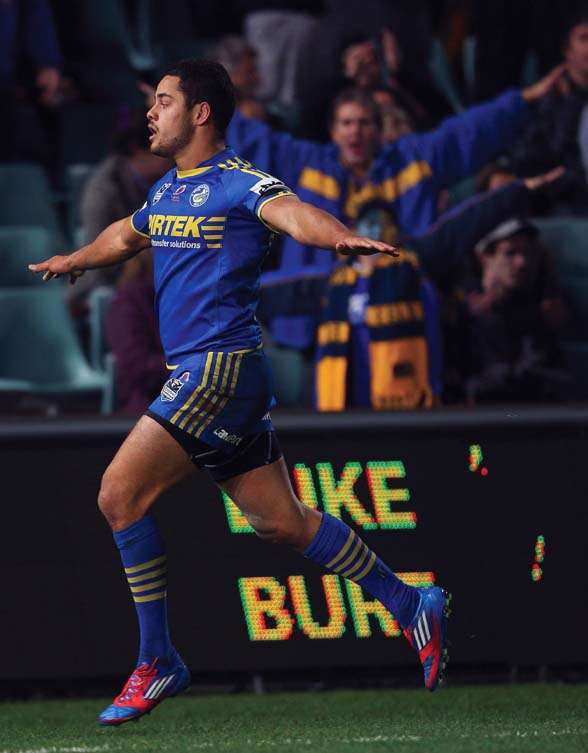
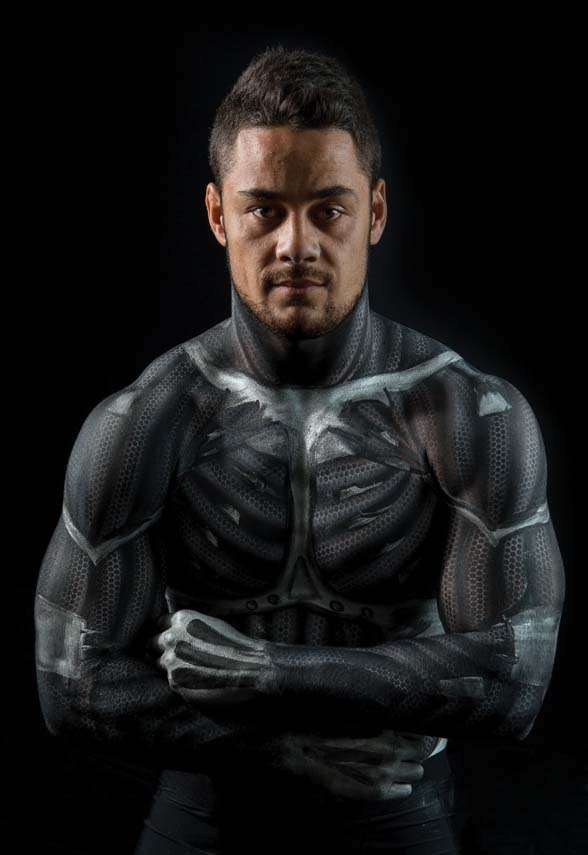
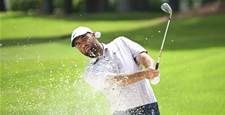
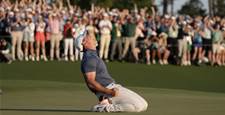
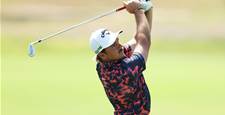

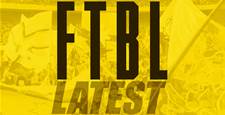

.jpg&h=115&w=225&c=1&s=1)




